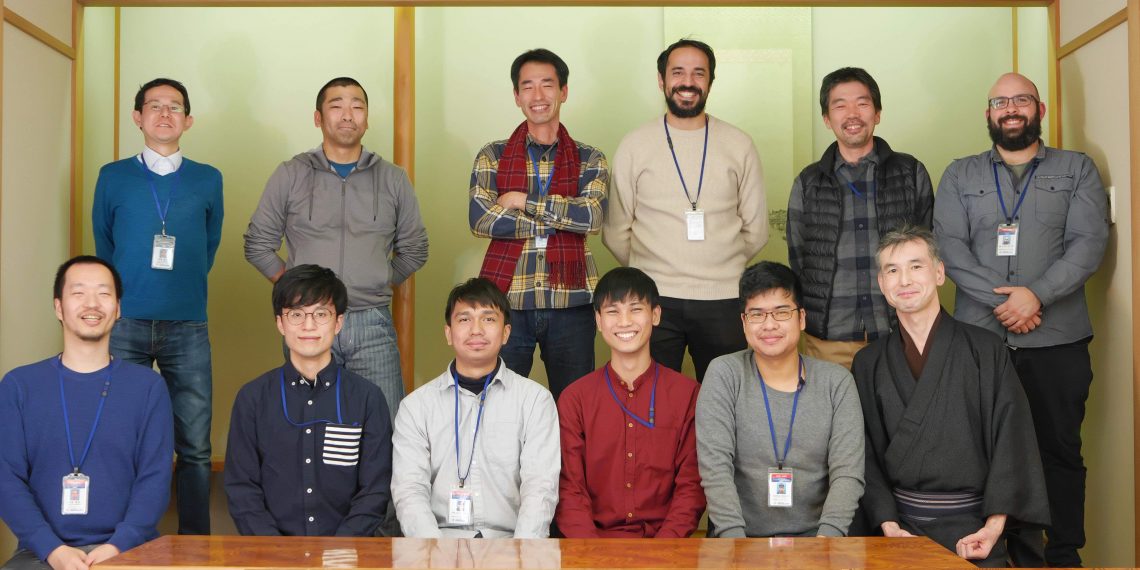Interview with João Paulo, assistant researcher at INESC TEC’s High-Assurance Software Laboratory (HASLab)
The visit to the National Institute of Advanced Industrial Science and Technology (AIST), in Tsukuba, Japan, aimed to “plan and commence a collaboration project between the two institutions”. BIP INESC TEC Magazine interviewed João Paulo, who shared his experience over the time he spent at AIST (one month), pointing out that “the experience also allowed him to improve his knowledge of advanced computing and the very functioning of the ABCI supercomputer”.
How did the opportunity to visit the National Institute of Advanced Industrial Science (AIST) arise?
During the SuperComputing’19 conference, where I had the chance to speak with some researchers from AIST, namely with those who eventually welcomed me in Japan. Since AIST research interests were similar and complementary to those of HASLab, we decided that visiting them in Japan would be a great way to start a new collaboration between the two institutions.
It is important to mention that we already knew each other, since both institutions (INESC TEC and AIST) had come together through the transnational platforms CENTRA and Pragma. Moreover, the Memorandum of Understanding recently signed between the two institutions also helped formalising my visit to Japan.

What are the main objectives of this collaboration?
Both parties agreed to plan and commence a collaborative project between the two institutions. More specifically, the first phase focused on understanding how research on distributed storage systems – which I have been developing at HASLab – would be useful to improve the performance of the ABCI supercomputer,managed by AIST. Regarding the second phase, the key-objective was to define a project on this topic, which could lead to novel research outcomes, and prototypes of new solutions to be further integrated and tested on the ABCI supercomputer.
After a month at AIST, how do you evaluate this experience?
The experience was extremely positive. People welcomed me quite well and the integration with the AIST researchers and their working methods was very fast. In fact, this smooth integration allowed us to define two collaboration projects quite quickly, instead of just one. This experience also made it possible to improve my knowledge of advanced computing and the very functioning of the ABCI supercomputer.
In addition, I managed to include in these projects some Master’s and PhD students who are currently working with me at HASLab, and who will be able to test their research results in a real environment, with very interesting case studies.

In your opinion, how can INESC TEC benefit from this collaboration with AIST?
AIST is a research centre that addresses several fields of knowledge, namely, Computer Science, Natural Sciences, Energy and Environment, etc. In this sense, I believe that there are several possibilities for cooperation between INESC TEC and AIST researchers.
This collaboration with the AIST also allowed me to work on scientific topics relevant to my research, alongside international researchers. In addition, I can also apply and validate the results of this research in real environments, which raises difficulties and very interesting challenges.
Finally, I believe that this type of opportunity may also be relevant for other INESC TEC researchers.
What would you like to say to other INESC TEC researchers who could collaborate with AIST to develop their research lines?
My suggestion is that they should study and identify the key-areas in which the collaboration with AIST researchers or research groups could eventually be relevant to improve their research.
In the specific case of advanced computing, the research area that encouraged me to make this trip, the scientific influence of different fields of knowledge such as Artificial Intelligence, Distributed Systems, Storage, Virtualisation, Visualisation, Hardware, etc., is increasingly necessary.
The INESC TEC researcher mentioned in this news piece is associated with INESC TEC.




 News, current topics, curiosities and so much more about INESC TEC and its community!
News, current topics, curiosities and so much more about INESC TEC and its community!